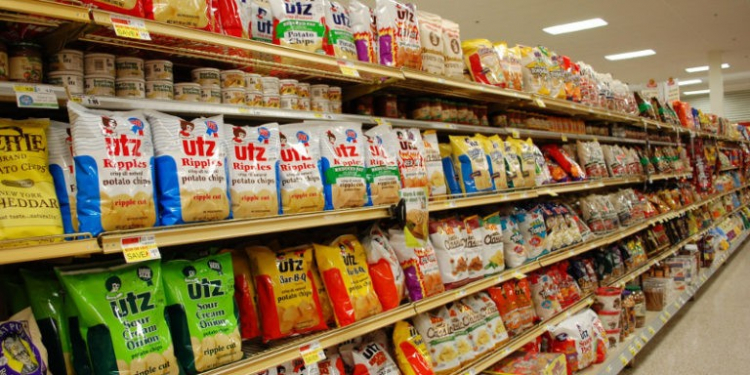The potato chip was created in the USA, while the potato itself originates from South America. What are the similarities between those two huge markets today regarding this tuberous crop? And what are the differences?
By Barbara Zec
Since the cultivation of the first potatoes, between 8000 and 5000 BC in Peru, and since the introduction of the much, much younger potato chip, many things have happened. Both products have conquered the world. Each of them is a global phenomenon. One interesting fact is that none of the South American countries is among the top 10 producers of potatoes, while the USA is in third place. What happened? Moreover, the USA has conquered the world with the Lay’s brand, including South American markets. Lay’s global domination is beyond doubt, while the success of other brands tends to be more localized. Let’s look at the current state of the most important brands in both markets.
USA
The food industry, especially the snacking segment, is undergoing constant changes in ownership. Many popular brands are now parts of huge global companies. For instance, among the top five potato chip brands in the USA, two belong to Frito-Lay, PepsiCo’s snack division (Lay’s and Ruffles), while another two belong to Snyder’s-Lance (Kettle and Cape Cod). The fifth is Utz, which remains independent but has decided to appear mightier by joining the Snack Food Association.
Lay’s is the world’s most popular potato chip brand and a flagship brand of Frito-Lay. The dominance of this brand is a result of smart business moves, including constant innovation and expansion by investing in new factories or acquiring smaller producers. The biggest asset here is the brand name. Lay’s is the Coca-Cola of the potato chips world.
What makes one brand strong is not only the look. The chosen appearance is just the beginning. Brand value is built through constant presence. The presence is built with the help of old advertising techniques, such as printed adverts and TV commercials. Today, with new media, especially social networks, building a strong brand is even easier.
Ruffles is another Frito-Lay potato chip brand popular in the US market. It is a real American brand, using red, white and blue as its signature colors. The new logotype, created by the DuPuis Group in 2015, is written in slab serif, which is highly associated with sports, especially baseball and American football. It was launched as a sturdier alternative for Frito-Lay potato chip consumers. The main characteristic of this brand is the wavy, ridged texture of the chip. They are much stronger and less likely to crack, and therefore less likely to leave the consumer frustrated while trying to dig the leftover part out of a dip. This brand is oriented towards male consumers. Communications are tailored accordingly, usually connected to sports and humor.
Snyder’s-Lance, the food company with a “passion for snacking”, is the owner of two other top five potato chip brands in the USA: Cape Cod and Kettle. While Frito-Lay is more oriented towards the mass market, the Snyder’s-Lance brands are slightly more sophisticated, with a much smaller audience and higher prices.
Edible Souvenir Turns Luxury Food
Cape Cod Potato Chips were launched in 1980 as an edible souvenir for Cape Cod tourists. The inspiration for this brand came from another popular destination: Hawaii. This brand is sold as a souvenir, which makes it exclusive and relatively more expensive than other potato chips. But, according to a New Yorker article from 1986, it quickly became “a luxury junk food” and has remained as such until the present time. The main element of Cape Cod Potato Chips’ visual identity is a watercolor illustration of a lighthouse. The name of the brand is always written on the right side of the illustration, using dark blue serif letters. In the last couple of years, the company has decided to expand its range of chip flavors. Currently, one can leave Cape Cod with a “designer” bag of Cape Cod Reduced Fat Potato Chips, Waffle Cut Chips, Popcorn and Dipping Shells. The online communication of the brand is built around vacations, leisure, family time and nature.
Nature is the keyword regarding Kettle, another Snyder’s-Lance potato chip brand. It nurtures the image of a natural, environmentally friendly, homemade-style chips. It was founded in 1982 as a part of the Kettle Foods Company, which was acquired by Snyder’s-Lance in February 2016. The brand is popular in the USA and the UK, while it also has ambitions to have a presence in other markets.
SOUTH AMERICA
PepsiCo has had a presence in Brazil and other South American markets since 1953. Brazilian consumers have been enjoying the Lay’s and Ruffles brands since the 1960s. PepsiCo also owns Elma Chips, a company that was created following the acquisition and merging of two domestic producers, Elma Food Products and American Potato Chips, in 1974. Elma Chips is the mother brand of many of PepsiCo’s salty snacks sold in Brazil. Two noteworthy domestic brands in the Elma Chips range are Batata Palha and Elma Chips Sensações. Batata Palha is a type of potato chip that is characteristic of Brazil, which comes in the shape of a tiny stick. It is not made to be eaten alone but as an accompaniment for a variety of meals, such as burgers and hot dogs.
Batata Palha is not exclusively made by Frito-Lay. Another popular brand of this “meal addition” is Yoki. Yoki is a General Mills brand founded in São Paulo in 1960 by a Japanese immigrant. The name Yoki was coined from the first letters of the name of the founder Yoshizo Kitano and means “good omens”. It has been a General Mills subsidiary since 2012. Besides the batata palha, the company has a range of potato chips named Yokitos.

